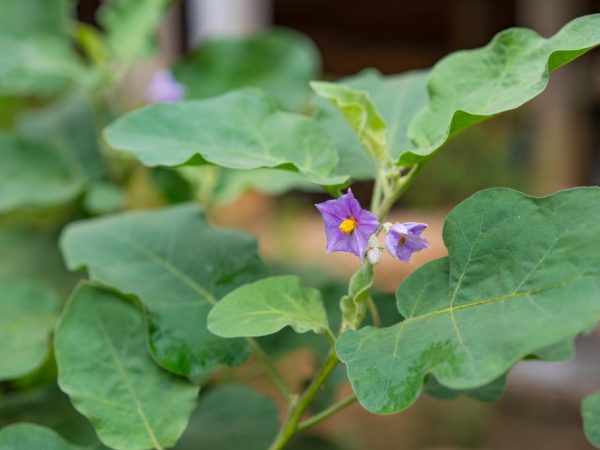Description of Clorinda eggplant
Eggplant Clorinda f1 is an early maturing vegetable that brings a large harvest. It has medium-sized fruits, is famous for its high immunity to diseases of various kinds, sudden changes in weather conditions will not harm this variety of eggplants.

Description of Clorinda eggplant
general characteristics
Eggplant Clorinda f1 is a medium-early ripening hybrid. It was obtained as a result of the selection work of Dutch scientists, the main feature of this vegetable is the ability to grow both in the greenhouse and in the open field.
Variety characteristic:
- bush - erect, spreading;
- height in open ground 80 cm, in a greenhouse - 90;
- fruits are dark purple, length from 15 to 23 cm;
- weight - 0.3 kg, the weight of some specimens reaches 1 kg;
- the pulp is dense, white;
- the taste is delicate, without obvious bitterness.
Growing features
Clorinda eggplant is grown in seedlings. The seedlings are tender, therefore direct planting of seeds into the ground is possible only in the southern regions. At home, the first thing to do is prepare the seedlings.
Planting seeds
Planting works are carried out in the last week of February or in March. To grow seedlings, a substrate should be prepared, which includes peat, compost, sand and turf. If desired, you can use ready-made primer.
Seeds are planted in a pre-moistened soil. A layer of peat or fertile soil is poured on top. The container for seedlings is covered with foil and left for 2 weeks at a temperature of 25 ° C.
Seedling conditions
When the first shoots have sprouted, remove the film and place the container with seeds in a well-lit place. For the successful growth and development of seedlings of the f1 variety, the following indicators must be maintained:
- daytime temperature - 25 ° С, nighttime - 18;
- the duration of daylight hours is 12-14, if necessary, use special lighting lamps;
- it is important to ensure a constant supply of fresh air, however, it is important to ensure that there are no drafts;
- watering frequency - as the soil dries out.
Landing in the ground
For planting eggplants, give preference to sunny locations well protected from the wind. The optimal soil for the full development of the plant is sandy loam soil.
For planting, holes are harvested at a distance of 30 cm from each other. The prepared pits are watered abundantly with water, after which the finished seedlings are placed in it. The root system is covered with earth and compacted well.
Subtleties of care

Plants need to be properly cared for
Eggplants of this variety require regular maintenance, which includes irrigation and feeding. The description indicates that the height of one specimen can reach 1 m, therefore, as it grows, it becomes necessary to install a support that will prevent the young plant from breaking.
Clorinda requires regular watering of plantings. Important: the first 5 days, after planting seedlings in open ground - watering is not required. This period is adaptation.
Before the beginning of fruiting, purified water is applied weekly in moderation. As the fruits form, the abundance of irrigation increases. During hot periods, water is applied at intervals of every 3 days. Watering is carried out with settled water, the temperature of which is equal to room temperature.
Top dressing
Apply fertilizer every 2 weeks. Top dressing recipes:
- a solution of potassium sulfate (5 g), urea and superphosphate (10 g per 10 l of water);
- ammophoska or nitrophoska (20 g per 10 l);
- slurry 1:15;
- spraying plants with a weak solution of boric acid;
- infusion of wood ash (250 g per bucket of water).
During the growing season, eggplants are fertilized with slurry or mineral fertilizers containing nitrogen. These components are essential for the formation and development of a healthy root system. Mineral fertilizer treatments alternate with organic fertilizers.
Diseases and pests
According to the description, the Clorinda variety has a high immunity to both viral and bacterial diseases. With improper care, fungal infection is observed, which occur when the soil is excessively waterlogged.
To prevent emergence, disinfect the seeds before planting. If lesions were found on adult specimens, treat the bushes with Zircon or Fitosporin.
In rare cases, aphids, spider mites, slugs appear on plants. To combat such pests, treat with Karbofos or Keltan preparations. From folk remedies, tobacco dust and wood ash are effective. They are sprayed over bushes to ward off pests.
Conclusion
Clorinda is a versatile vegetable that is used in all cuisines of the world. The culture is grown by the seedling method both in greenhouses and in open areas. The key to a healthy plant and a high-quality harvest is frequent watering and timely feeding.


